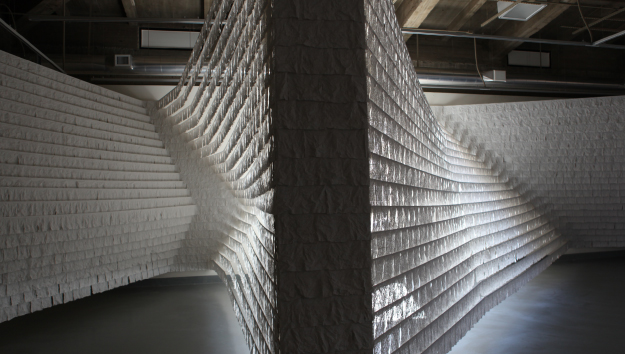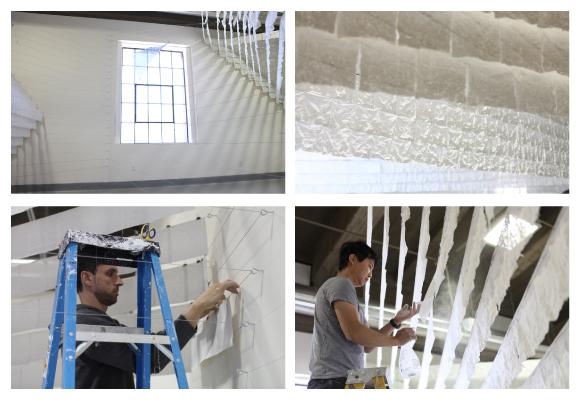
MinerAlert

MinerAlert


In the exhibitLight Lines, Jay Atherton and Cy Keener directed sunlight into the Rubin Gallery and onto vertical surfaces constructed from plaster impregnated fabric that stiffened when moistened. The artists installed nine mirrors in the landscape around the Stanlee and Gerald Rubin Center for the Visual Arts (Rubin Center) and each reflected the sun's rays into the gallery at a specific time of the day (the location of each and the time that its reflected light could be experienced was indicated on the map on the entrance wall on the ground floor of the Rubin Center). When UTEP's Seamon Hall was renovated to be the Rubin Center in 2004, all of its windows were covered with sheetrock in order to create wall space for the exhibition of art. ForLight Lines, three windows were revealed, one each on the north, west and east sides of the building, so that light could enter from three directions.

![]()
The standard use for the fabric inLight Linesis for casts for broken bones. It was fragile but strong and permitted the transmission of light while also mediated it. Mirrors in the landscape could be associated with survival tactics; they are used by the military to signal location. Many contemporary artists have employed mirrors (Yayoi Kusama, Robert Morris and Robert Rauschenberg to name a few) as a means for situating the viewer within a broader interior environment. Atherton/Keener distinguish themselves from these precedents by placing the mirrors outdoors in order to connect environmental conditions with interior space. They also depart from their artistic predecessors because they use the mirror as a tool that directs light rather than as a material that reflects image.

Video showing the installation process:
Light Lines - How It All Happened from Stanlee and Gerald Rubin Center on Vimeo.
![]()
Jay Atherton and Cy Keener are principles of the design firm Atherton/Keener and are based in Phoenix, Arizona. Each earned a graduate degree in architecture from the University of California, Berkeley. They visited El Paso for the first time in September 2010 to discuss the possibility of reshaping one of the galleries in the Rubin Center to express one or many of the unique qualities of the site. Initially they thought in depth about the U.S./Mexico border and how to respond to it. But within a few weeks they decided that approach was, in the words of Atherton, too directly about construction; we were missing the big picture. Instead we wanted to ask questions about commerce and history and how light is a mixture of colors reflected from objects around us. Keener adds, We did not really want to address architectural space but rather that which is not knowable.
